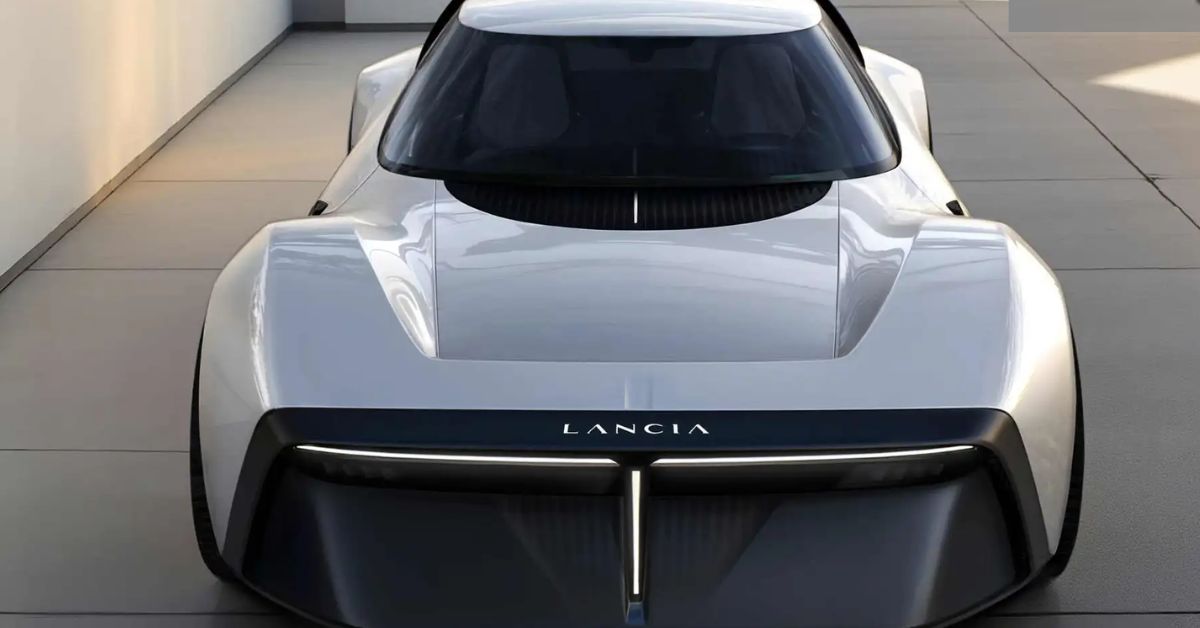Lancia, the storied Italian marque known for its rally heritage and avant-garde design, has long been absent from the performance car conversation. But thanks to a visionary reinterpretation by designer Christopher Giroux, the brand’s iconic Montecarlo coupe has been reborn—at least in concept form. The Lancia Pu+Ra Monte Carlo is a modern tribute to the original Beta Montecarlo, blending retro charm with futuristic styling in a way that feels both nostalgic and revolutionary.
🏁 A Tribute to a Motorsport Legend
The original Lancia Beta Montecarlo debuted in 1975 as a mid-engined, rear-wheel-drive sports car designed by Paolo Martin at Pininfarina. It was compact, angular, and full of character—eventually evolving into the legendary Rally 037 that dominated Group B rallying in the 1980s. The Montecarlo also made cinematic appearances, including in Herbie Goes to Monte Carlo, cementing its place in pop culture.
To mark the 50th anniversary of the Montecarlo, Giroux—a senior exterior designer at Ford—used his free time to reimagine the coupe for the modern era. His creation, the Pu+Ra Monte Carlo, is not just a retro sketch. It’s a serious design study that could plausibly make the leap to production, serving as a halo model for Lancia’s revival under Stellantis.
🎨 Design: Where Past Meets Future
The Pu+Ra Monte Carlo draws heavily from Lancia’s new design language, first seen in the Pu+Ra HPE concept. It features slim T-shaped LED lights at both ends, circular motifs on the hood and roof, and a wraparound greenhouse that evokes the legendary Stratos. The front fascia sports a pronounced chin, aero blades, and sculpted fenders, giving the car an exotic stance that’s unmistakably Italian.
One of the most striking elements is the reinterpretation of the Montecarlo’s signature flying buttresses. Giroux reimagines them in transparent glass, adding a futuristic touch while preserving the coupe’s iconic silhouette. The rear features a thin light strip beneath a discreet spoiler, while the triangular rear panels—once visually heavy—are now rendered in plexiglass with integrated LEDs2.
🧠 Design Philosophy: Authenticity Over Nostalgia
What sets the Pu+Ra Monte Carlo apart from other retro-inspired concepts is its authenticity. Giroux didn’t simply copy the old design; he understood the essence of Lancia’s DNA and translated it into a modern context. The car balances sharp edges with gentle curves, maintaining a low, planted stance that’s aggressive without being cartoonish.
The profile is clean and purposeful, with a character line originating from black side gills. The overall surfacing is sculpted to enhance aerodynamics, while the integrated spoiler and light bar give the rear a futuristic glow. It’s a clever remix of heritage that avoids the usual pitfalls of retro design—no gimmicks, just thoughtful evolution.
🏎️ Rally Spirit: A Nod to the 037
No Lancia coupe feels complete without a racing variant, and Giroux delivers with a rally-spec version of the Pu+Ra Monte Carlo. Wider arches, stripped-back detailing, and Alitalia livery pay homage to the brand’s WRC past. The rally version channels the same competition spirit that defined the original 037, making it easy to imagine this concept tearing up a hill climb or rally stage.
🔋 Could It Be Electric?
While Giroux’s concept is purely a design exercise, it aligns with Lancia’s broader electrification goals. The Pu+Ra HPE concept, which inspired this design, was a 100% electric vehicle with a claimed range of over 700 km and ultra-fast charging capabilities. If the Pu+Ra Monte Carlo were to enter production, it would likely adopt similar electric architecture, positioning it as a stylish and sustainable sports coupe for the future.
🧭 Lancia’s Future: Is a Comeback on the Horizon?
Currently, Lancia’s lineup is limited to the Ypsilon subcompact hatchback, sold exclusively in Italy. However, Stellantis has announced plans to expand the brand’s portfolio with models like the Gamma crossover and a new Delta. The Pu+Ra Monte Carlo could serve as the emotional centerpiece of this revival—a halo car that reestablishes Lancia’s reputation for bold design and motorsport pedigree.
Whether or not this concept reaches production, it has already succeeded in reigniting interest in Lancia. It proves that the brand still has the creative spark to produce cars that are not only beautiful but also meaningful.
